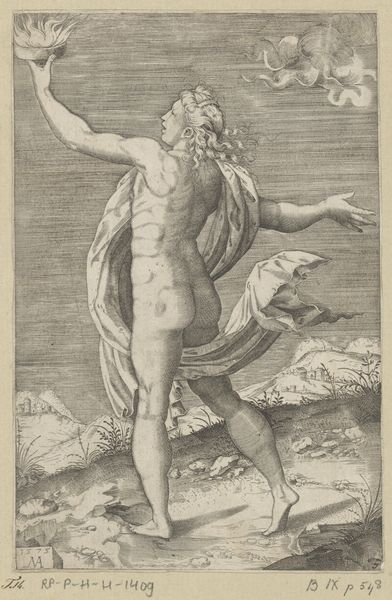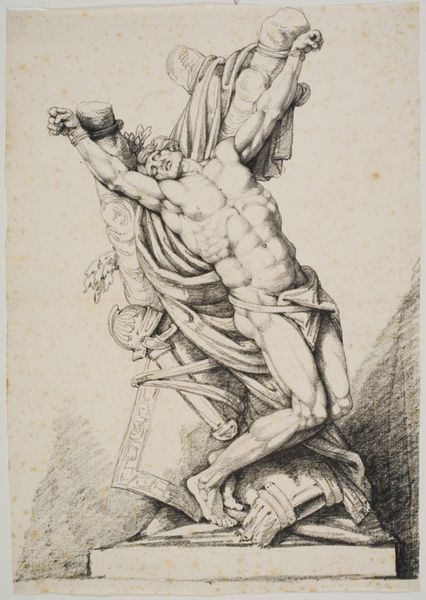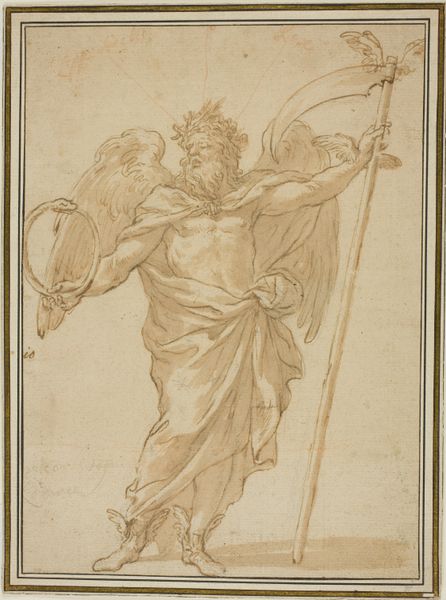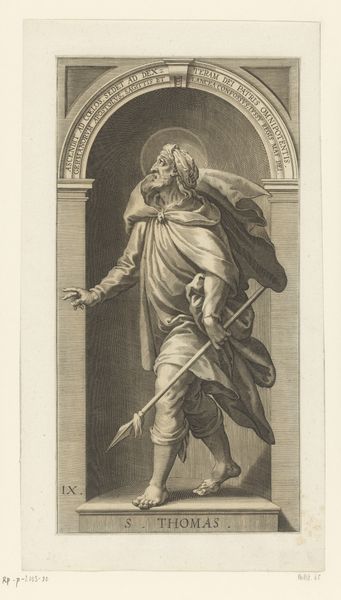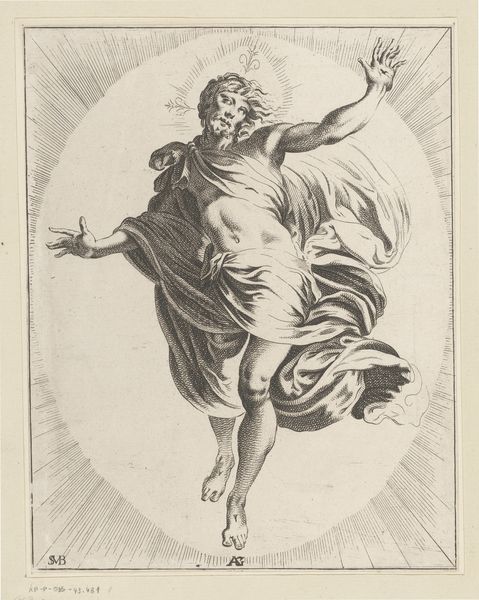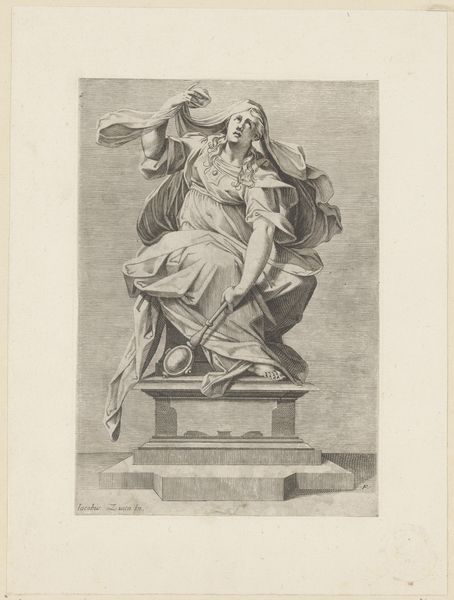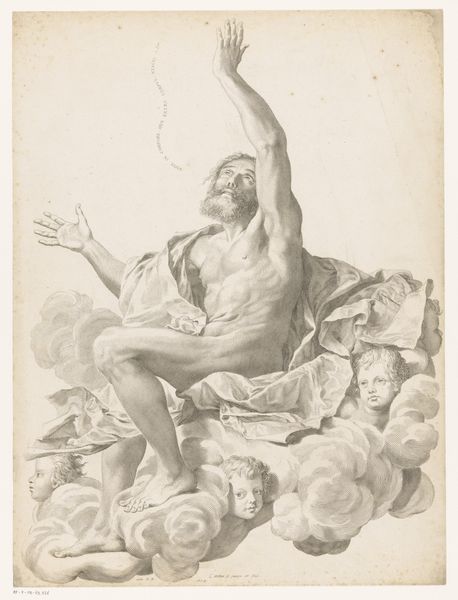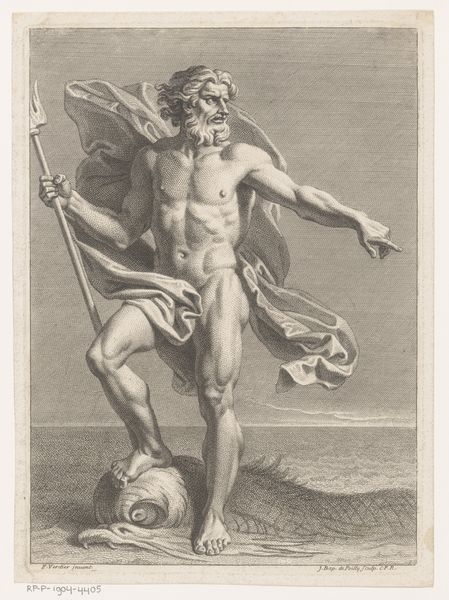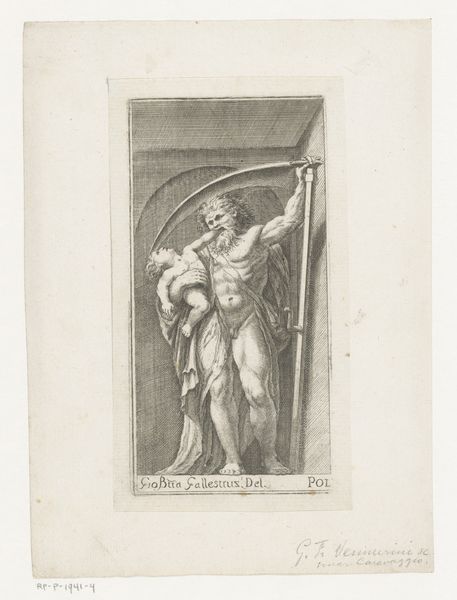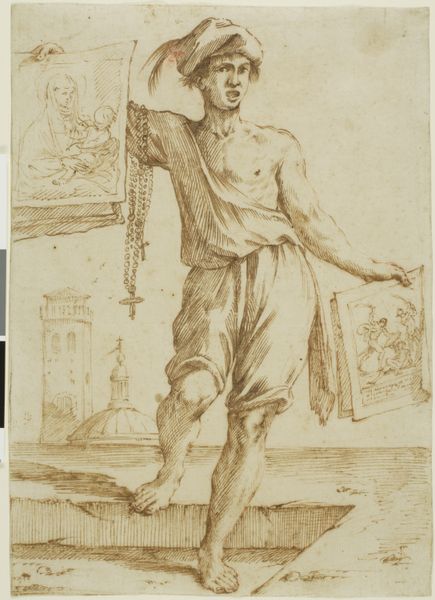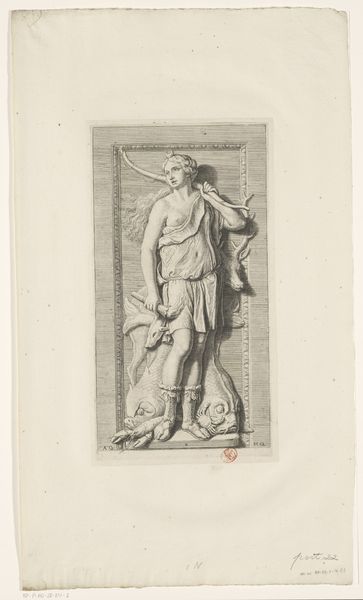
engraving
#
baroque
#
figuration
#
line
#
history-painting
#
italian-renaissance
#
engraving
Dimensions: height 276 mm, width 198 mm
Copyright: Rijks Museum: Open Domain
Editor: Here we have "The Holy Andrew", an engraving by Pietro del Po, dating between 1620 and 1692. The figure almost seems to leap off the page, yet something about the lines and shading gives it a restrained quality. How would you interpret this work, focusing on its formal elements? Curator: Certainly. Considering a Formalist lens, one observes a masterful display of line work. Del Po uses line to create form, depth, and texture. Note the strategic placement of lines to sculpt the musculature of Saint Andrew, or the drapery, creating highlights and shadows. The diagonal thrust of the cross directs our gaze upwards. What effect does the engraver's reliance on line, rather than, say, color, create in your opinion? Editor: It feels almost like a study, or a statement reduced to its most fundamental components, giving it both power and a sort of clinical detachment. The lines define and confine at the same time. Curator: Precisely. Notice the texture, created purely through varied strokes. Del Po uses hatching and cross-hatching to suggest volume. These compositional decisions guide our eyes across the plane. We interpret the volume of form using dark and light, all implied by these lines. How does the engraver suggest movement or emotion purely through structural elements like line, form, and shading? Editor: The upward gaze and open arms, combined with the implied weight of the cross, evoke a sense of yearning or sacrifice. But you're right, it's all in how the lines are arranged. It’s clever to use a lack of color, and stark lighting, to create a sense of seriousness, perhaps tragedy. Curator: Exactly! So you begin to appreciate the inherent power within seemingly limited technical means, all contributing to the overall artistic impact and our emotional response. Editor: I see it now! Examining solely the visual components reveals the artist’s strategic decisions in guiding the eye and influencing our emotional understanding of the piece.
Comments
No comments
Be the first to comment and join the conversation on the ultimate creative platform.

